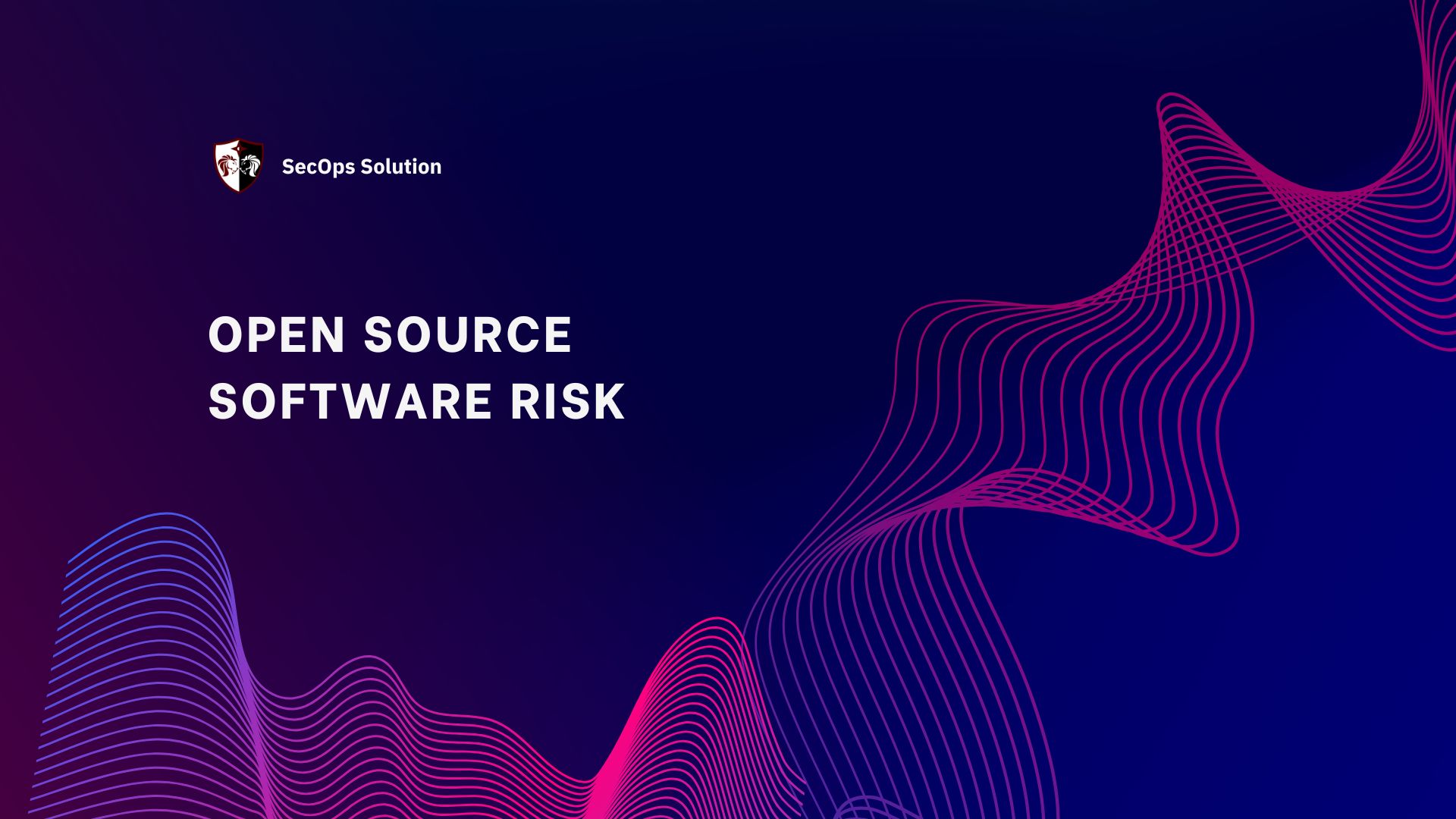
Agentless security for your infrastructure and applications - to build faster, more securely and in a fraction of the operational cost of other solutions

hello@secopsolution.com

Open-source software has revolutionized the way we develop and use software. It has allowed for greater innovation, faster development, and cost-effective solutions. However, it has also introduced new vulnerabilities and risks that need to be managed.
Almost 80% of code in modern applications is code that relies on open-source packages. While open-source software is the bedrock of modern software development, it is also the weakest link in the software supply chain, Endor Labs said in its report.
In this blog, we will discuss the top 10 open source software risks that organizations should be aware of to minimize their exposure to potential threats.
Known vulnerabilities are one of the most common risks associated with open-source software. These are security flaws that are publicly known and can be exploited by attackers.
The risk of known vulnerabilities arises because many open source projects rely on volunteer developers to identify and fix security issues. These developers may not always have the expertise or resources to identify and fix all vulnerabilities. Additionally, since open-source code is publicly available, attackers can analyze the code and identify vulnerabilities more easily.
Mitigation:
Since open-source software is built on the concept of collaboration, many developers rely on third-party libraries and packages to streamline their development process. However, if an attacker is able to compromise one of these packages, it can lead to a widespread impact across the software development community.
Once a package is compromised, the attacker can distribute it through public package repositories, where it can be downloaded and used by other developers. If the malicious package is used, it can lead to the introduction of malware, backdoors, or other vulnerabilities in the software that relies on it. This can result in data theft, system compromise, and other security incidents.
Mitigation:
Name Confusion Attacks are a type of open-source software risk that involves the use of similar or identical package names to confuse users and trick them into installing malicious or counterfeit packages. This attack can lead to the compromise of sensitive information, as well as the installation of malware or other harmful software.
For example, an attacker could create a fake version of a popular open-source library and distribute it on a third-party package repository with a similar name to the legitimate one. If users inadvertently install the fake library, it could contain malicious code that steals sensitive data or compromises their systems.
Mitigation:
Unmaintained software refers to software that has not been updated or maintained by its creators or contributors for an extended period. The software may be outdated, incompatible with newer technologies or security measures, and may have security vulnerabilities that have not been addressed.
Mitigation:
It refers to using older versions of open-source software that no longer receives updates or support from the developers. As a result, these older versions can have known security vulnerabilities that have not been patched, leaving the software open to exploitation by attackers.
Mitigation:
Untracked dependencies refer to third-party libraries or components that an open-source software project relies on, but which are not being properly tracked or managed. This can result in security vulnerabilities being introduced into the project, as the dependencies may contain outdated or insecure code.
Mitigation:
License risk in open source software refers to the legal implications and potential consequences of using a particular software license. It is important to be aware of the terms and conditions of a software license before using it, as it can impact the distribution and use of the software, as well as potential legal liabilities.
There are several types of open source licenses, each with its own terms and conditions. Some licenses may require attribution or mandate that any derivative works be released under the same license, while others may allow for more freedom in the use and distribution of the software. However, not all licenses are compatible with each other, and mixing incompatible licenses can lead to legal issues.
Mitigation:
Immature software refers to open source software that is in its early stages of development and has not undergone proper testing or evaluation. This means that it may have unknown vulnerabilities or defects that could potentially compromise the security of the system.
Mitigation:
It refers to any unauthorized or unapproved changes made to the source code or dependencies by a developer or contributor. This risk can result in unexpected changes to the software's behavior, functionality, or security. It can also create compatibility issues, break integrations, or introduce vulnerabilities that can be exploited by attackers.
Mitigation:
It refers to the problem of using a dependency that is either too large or too small for the specific project's needs. If a dependency is too large, it may include a lot of unnecessary features or code that increases the overall size of the project, making it harder to maintain and more prone to vulnerabilities. Conversely, if a dependency is too small, it may lack important features, causing developers to write additional code that increases the risk of errors and security issues.
Mitigation:
SecOps Solution is an agentless patch and vulnerability management platform that helps organizations quickly remediate security risks across operating systems and third-party applications, both on-prem and remote.
Contact us to learn more.